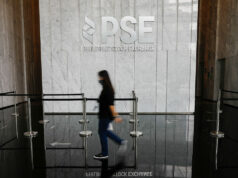Central bank weighing multilateral banks’ views before decision on ’deeper’ rate cut
THE Bangko Sentral ng Pilipinas (BSP) is evaluating the economic assessments of various multilateral lenders before determining the timing of a “deeper cut” to interest rates to cushion the economy against the impact of the coronavirus disease 2019 (COVID-19) outbreak.
BSP Governor Benjamin E. Diokno said the central bank will remain data-driven and noted that monetary policy interventions will take time to be fully felt. He added that the central bank is also looking into further reducing the banking industry’s reserve requirement ratio (RRR) to boost liquidity.
“Is BSP thinking of cutting policy rates and RRR in the near-term? BSP is number-crunching at the moment looking at how the economy will perform, by quarter, under various assumptions knowing how IMF (International Monetary Fund), the WB (World Bank), the ADB (Asian Development Bank) see the global economy perform moving forward,” Mr. Diokno said in a phone message on Wednesday.
His statement followed the release of the World Economic Outlook on Tuesday, in which the IMF downgraded its growth forecast for the Philippines to 0.6% from an initial 6.3% issued last year. The IMF has lowered its estimate for global growth on the assumption of the “worst recession since the Great Depression” due to the outbreak.
Earlier, the WB and ADB gave updated gross domestic product growth forecasts for the Philippines of 3% (from 6.1%) and 2% (from 6.2%), respectively, factoring in the adverse effects of the virus.
“Given the coronavirus pandemic and the muted inflation outlook owing largely to the collapse of world oil prices and lower consumer demand, a deep cut is warranted,” he added.
Mr. Diokno has said the bank is looking to bring overnight reverse repurchase rates to below 3% to support the economy during the “once-in-a-lifetime crisis.”
Key policy rates now stand at 3.25% for overnight reverse repurchases, while the deposit and lending rates are at 2.75% and 3.75%, respectively. The Monetary Board (MB) cut rates by 50 basis points (bps) in March.
So far, the BSP has cut rates by 150 bps since 2019, almost completely offsetting the 175-bps rate hikes of 2018 when inflation was surging.
Asked whether the authorities are considering an off-cycle cut ahead of the May 21 policy-setting meeting, Mr. Diokno said: “[C]uts are forthcoming at the right time.”
Meanwhile, the 200 bps reduction in RRR for big banks to 12% took effect on Friday.
The MB has authorized Mr. Diokno to cut rates by up to 400 bps this year to support liquidity during the outbreak.
“The BSP will continue to be data-dependent but with full knowledge that monetary policy works with a lag,” he said.
The MB said it is also evaluating a reduction in RRR for other financial institutions, including thrift and rural banks, where the current RRRs are 4% and 3%, respectively.
In a report, Oxford Economics Chief Economist Sian Fenner said that the Philippines and India have the “most aggressive” central banks in Asia with both already having reduced key rates by 75 bps in 2020.
Ms. Fenner said policy rates in Asia are likely to edge lower to blunt the impact of the virus during the next months. She added that Asia’s monetary capacity has yet to be “exhausted” as inflation remains low.
“For some, such as Indonesia and the Philippines, an increase in financial stability risk will be considered by central banks as a constraint to lowering rates significantly more,” she said.
March inflation in the Philippines settled at 2.5%, easing from the 2.6% in February and the year-earlier 3.3%, due to lower oil prices. This brought the year-to-date average to 2.7%, above the 2.2% expected by the BSP for 2020. — Luz Wendy T. Noble



